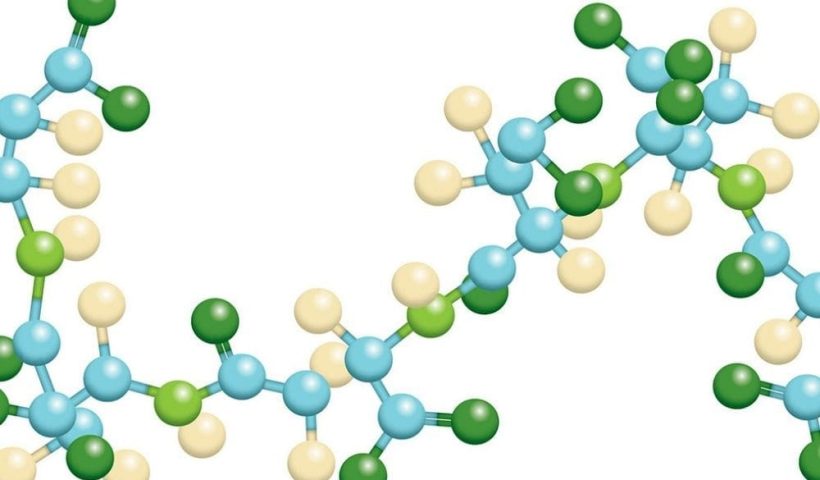
“We used to see a lot of cleat marks from golfers; we could have had 30 golfers out there and it would’ve looked like we had 150. Now we can have 150 and it looks like we had 30.” -Brent Palich, Superintendent at Brookside CC
Foundation 40
This is our proprietary blend of a small set of particular amino acids concentrated to 40%. This product is doing a lot of heavy lifting from a plant health standpoint and particularly shines in times of intense stress and turf decline. I’ll go over a few of the highlights, but this small article can’t do justice to the entirety of Foundation 40’s capabilities. I encourage you to check out this link of a webinar from a few years back on components within this product: https://www.youtube.com/watch?v=BaNTC-L4Yqo
Foundation 40 is heavily weighted in amino acids that are osmolytes. This is a fancy term for “good salt.” The idea here is to load as many of these osmolytes within the vacuole of the cell. If we can do so, water flows to that higher concentration from outside the cell to inside the cell. This causes our cells to be full (turgid) and healthy. This will also help to flex open guard cells and help other inputs to enter the plant, such as PGRs and fungicides more effectively.
This product will also help any raw nutrients in the tank to be more effective and efficient by chelating them and keeping them in plant-available form. Components within Foundation 40 will also help to assimilate nitrogen and carbon, specifically in times when the plant is under stress and doesn’t want to do so. Effectively it makes nitrogen work, builds chlorophyll, and helps the plant to photosynthesize under stress.
The last point I’ll hit on (again, check out the link) is the ability of a couple of components within the product to “shapeshift.” Some of the amino acids within Foundation 40 actually have the ability to, metabolically, turn downstream into other aminos and metabolites through the process of metabolism. This allows the plant to decide what it wants effectively, at a given moment in time, based on environmental conditions and factors.
Foliar Pak 11-0-11 and 1-0-15
The main reason these two products are important is potassium. Both these products place emphasis on amino acid chelated forms of potassium.
Why is this important? The concept that we touched on with Foundation 40 is osmolytes. Potassium is one of the oldest osmolytes in the book! Again, in times of heavy traffic and summer stress, I can’t overstate the importance of keeping our cells “full” and turgid.
In addition to the osmotic benefit, potassium also plays an important role in protein synthesis. It will also help with the transportation of sugars and nutrients. In short, it’s keeping cells full, while helping them to perform the functions they were meant to perform under no stress.
Foliar Pak CSi L
CSi L was re-formulated a couple of years ago. Since it’s (re) introduction, it has proven to be one of our top technology, best field performing, and most popular products. Si products have been out for years. Some have had greater success than others, but there has always been a question of how these products will do in the tank.
The formula of CSi L is a true solution. This matters for two reasons. The first is it’s compatible for tank mixes. We’ve had zero issues with tank mixes and our Si product. The other importance of being a true solution is that plants “drink” fertilizer (whether foliar or root absorbed); they don’t “eat” it. This is to say nutrients must be in solution to be taken up by the plant. CSi L is ready and good to go!
The 3-Prong Approach
When it comes to how this product combats traffic and summer stress, it’s a 3-prong approach.
The first prong is the obvious one of Si. Turf managers have used Si for years to help with cell integrity and turgidity. The mode of action, if you will, is the Si plays a role in acting as “glue” between cells, as well as promotes cell wall strength and integrity. Both these functions serve to improve traffic tolerance and stand up to traffic and summer stress.
The second and third prongs both have to do with the specific amino acid that is formulated with the Si. All 17% of the aminos in this product hail from an amino acid that is one of the strongest osmolytes known to turf, thus the second prong. Again, that same concept mentioned earlier of hydrating and maintaining hydration in cells is what the function is of the aminos in this product.
The final prong is that of the actual structure of the amino acid used in CSi L. The aminos in this product are the only ones that have a “cyclic/brick-like” structure. This becomes important if we start to lose the battle of maintaining water within the cell. If we’ve loaded these “brick-like” aminos in the vacuole of the cell, then start to lose that “water battle” to salts outside the cell, the vacuole will only collapse to where those “brick-like” aminos exist. Imagine a water balloon filled with bricks. Now we start to let water out of the balloon. The balloon will only collapse as far as those bricks.
Again, Brent’s comments are indicative of a lot of Foliar-Pak’s summer programs out in the field. With the amino acid technology we have today, we’re able to target specific amino acids, formulate them with specific nutrients, and target specific end-user goals. In this “Behind the Science” example, we were targeting the end-user goal of standing up to traffic and summer stress.



